

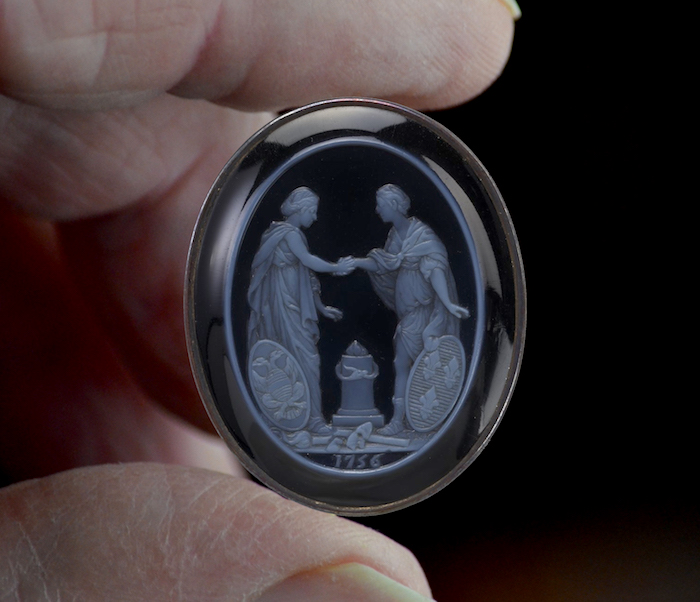
| Here is another sardonyx stone carved by Jacques Guay after a design by Francois Boucheur and found in the Suite d'estampes gravees par Madame la marquise de Pompadour d'apres les pierres gravees de Guay, graveur du roy. I found it while searching Gallica for anything Boucheur (click here to see it on Gallica). In the Bibliotheque nationale de France catalogued information for this item, there is no mention of it being in engravings of Madame de Pompadour, however it is obviously her engraving number 54, as shown in the Comparative Diagrams below. |
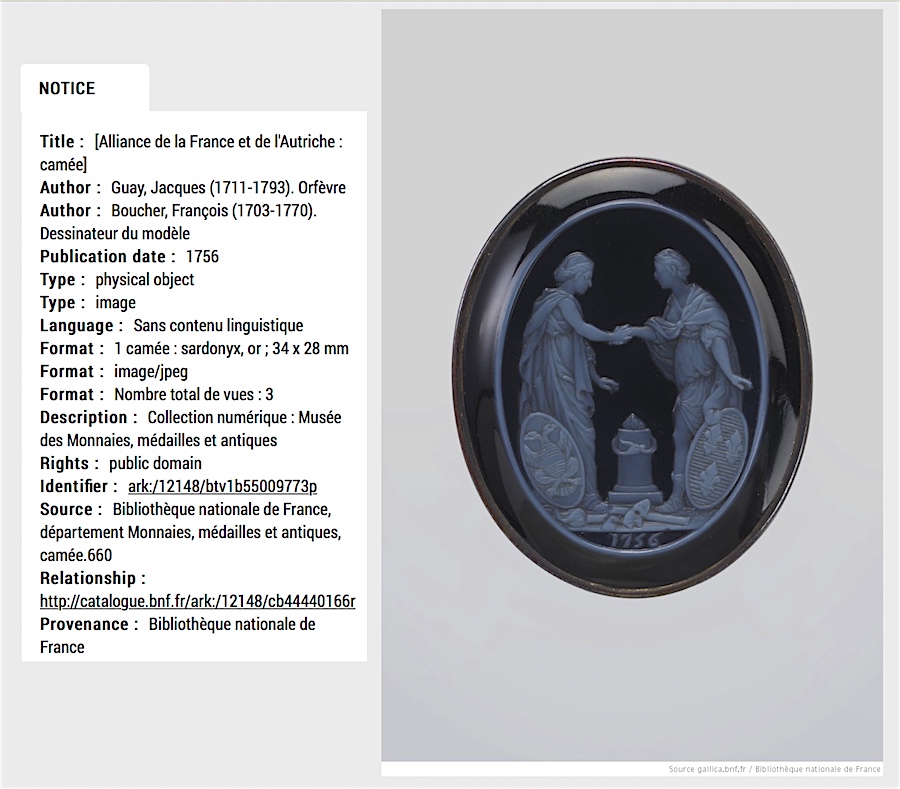
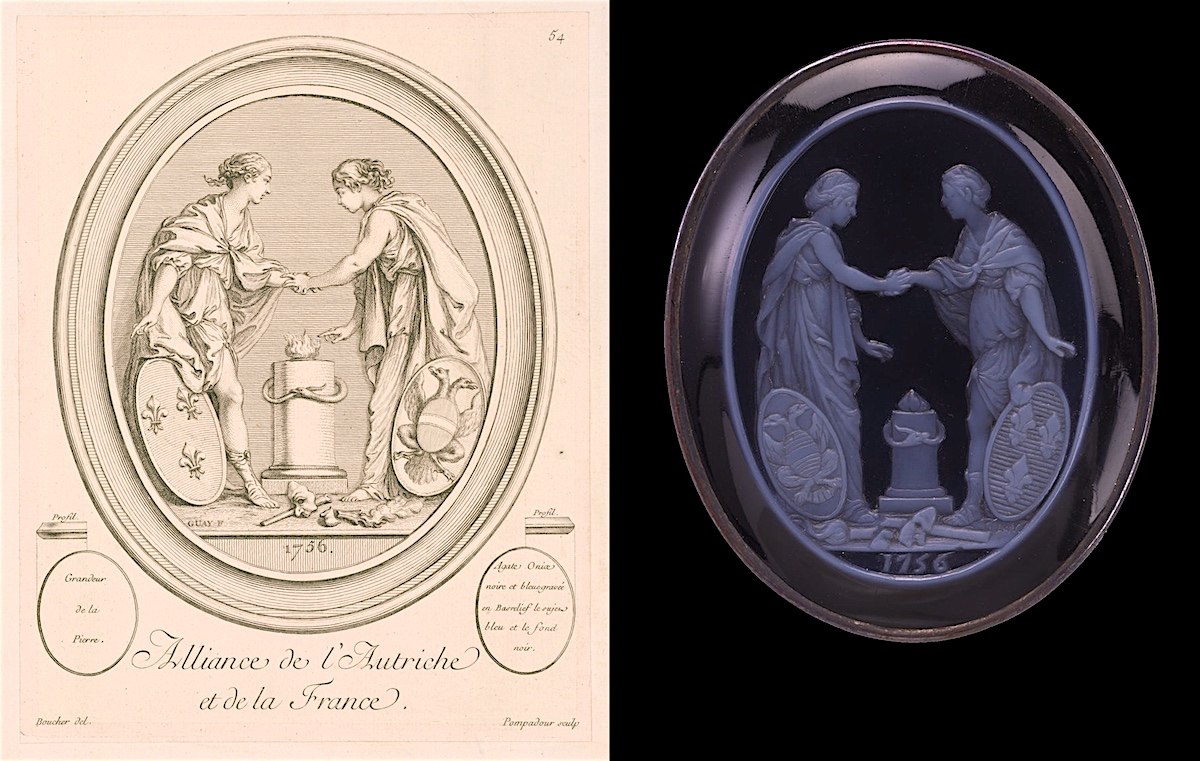
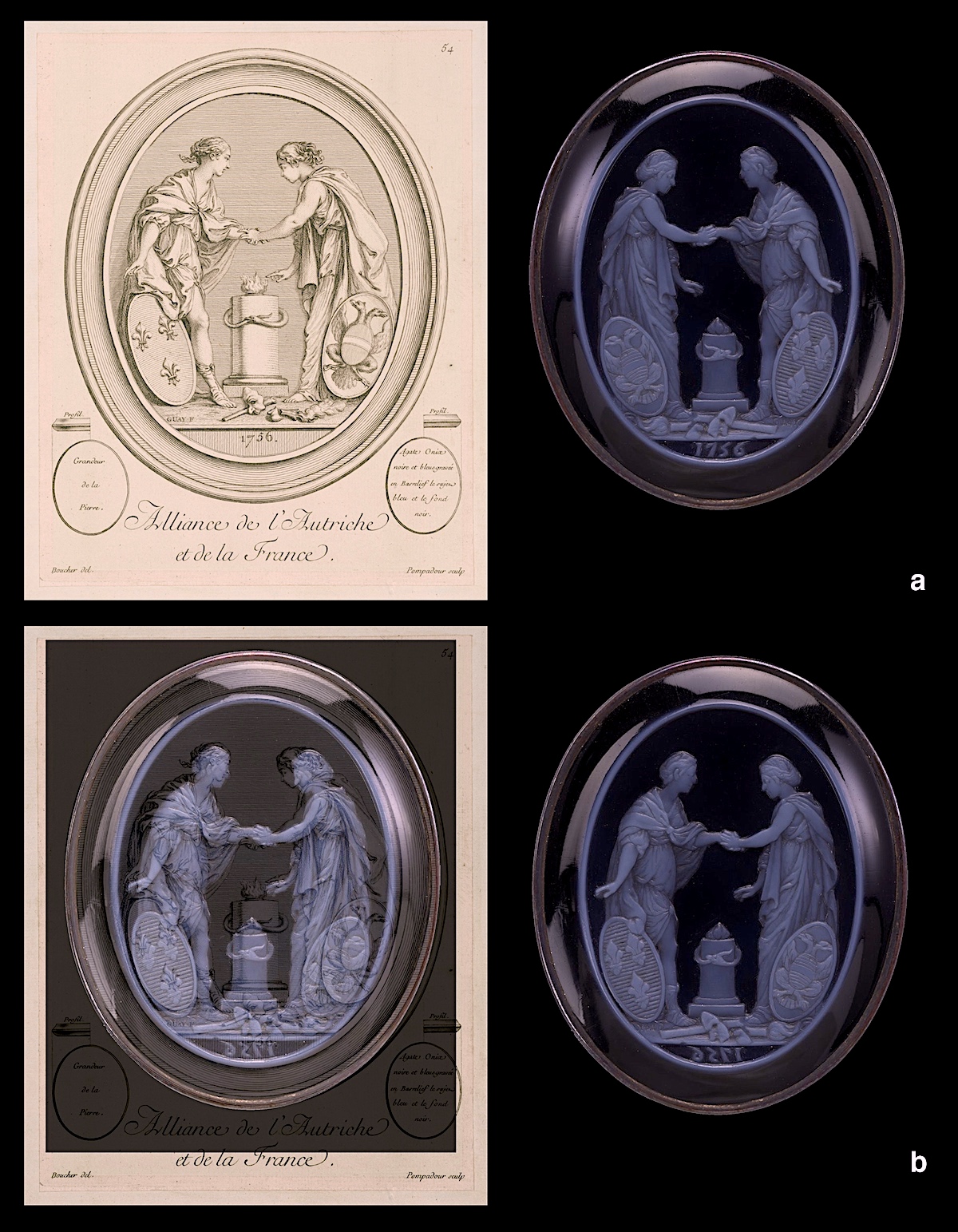
| In Comparative Diagram 2 we see that the engraving is a reversed copy of the stone carved by Guay, the original design was by Boucheur, yet when we reverse the stone and compare it with the engraving with an overlay transparencey we see that the engraving is not an exact copy, not even an attempt at an exact copy. We wonder if this engraving, which was also designed by Boucher, is in fact the original plan for the stone, that was executed by Guay with a certain amount of artistic licence? Obviously it is easier to draw something on paper, than to carve it on a small bit of rock, perhaps this carving by Guay is as close as he could come to the illustration of Boucheur. |
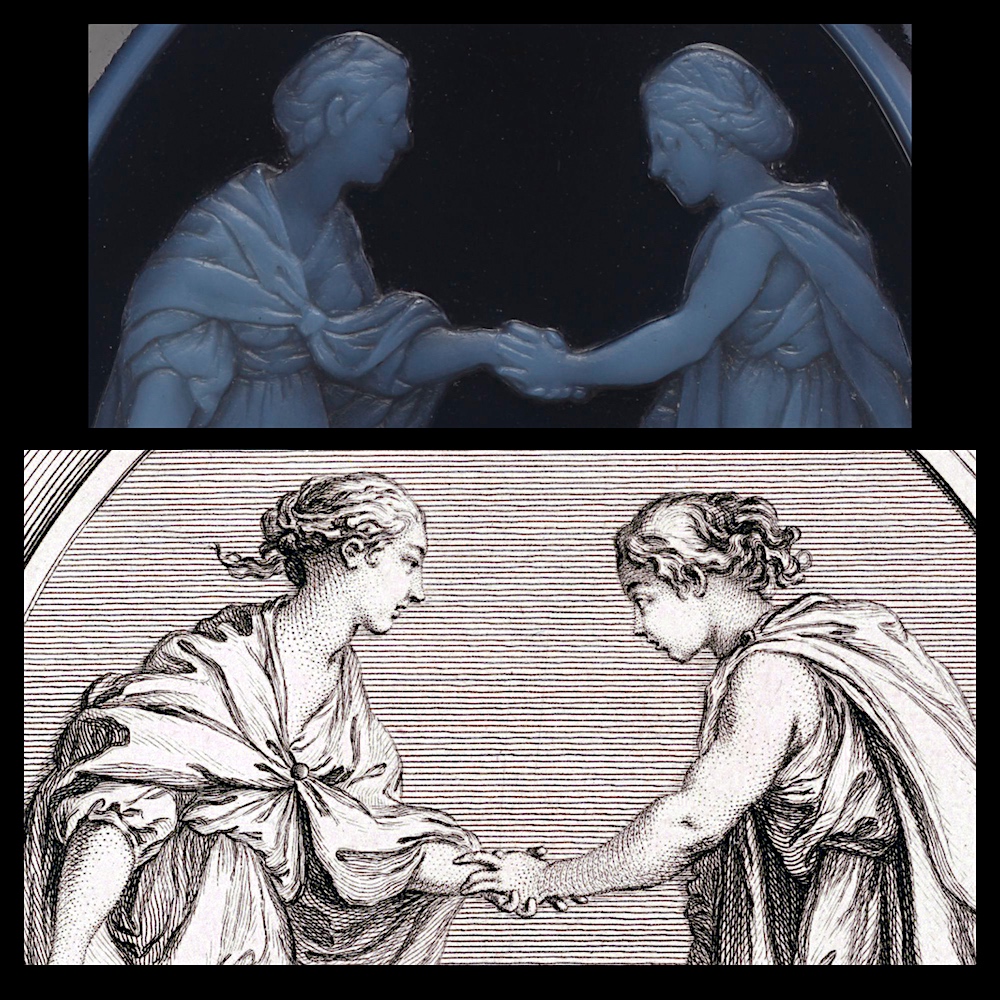
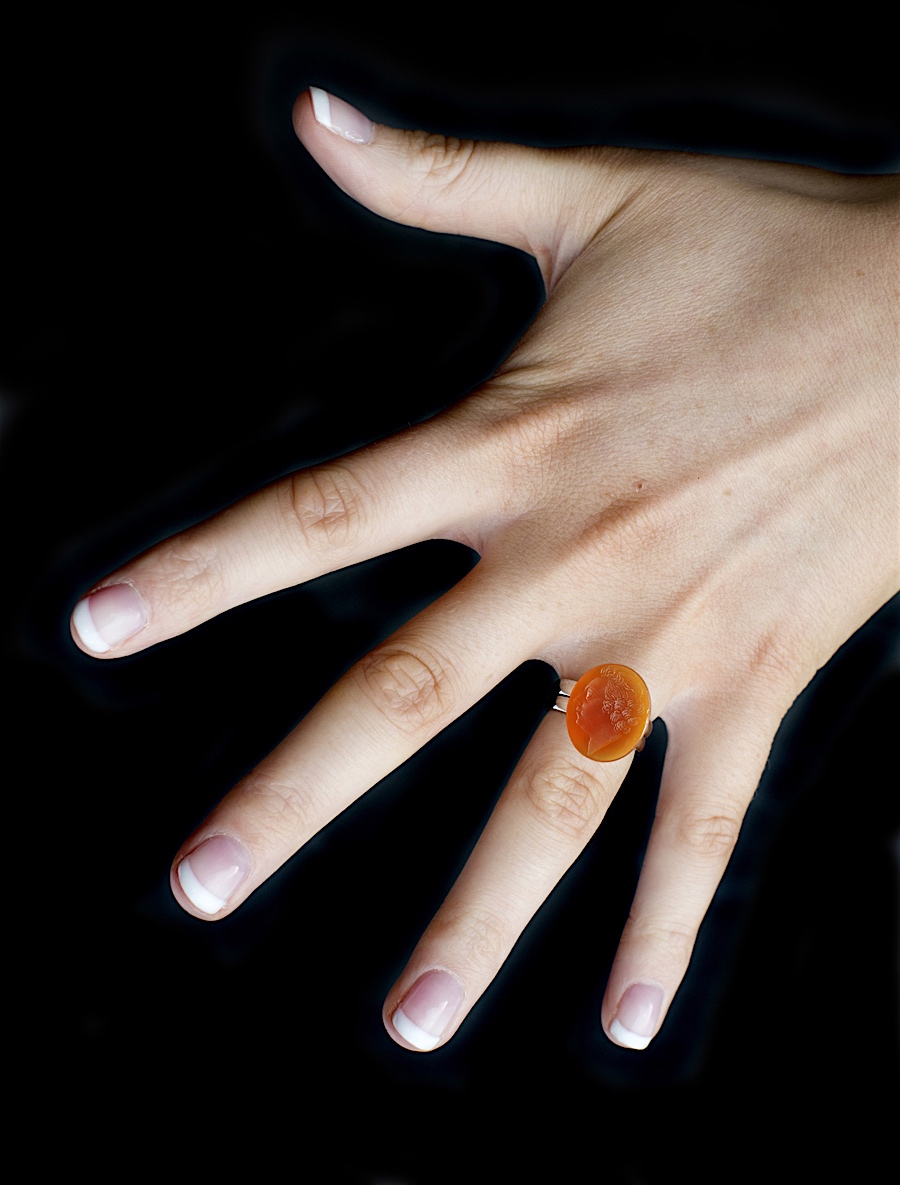
| I came across this next item while searching in the Walters Art Museum for anything Pompadour, I wondered if it would be in the Pompadour engravings as she was mentioned in the information for this item. They claim that it was carved by Guay, however there is no signature where one would expect it, and after a search through the Pompadour engravings I did not find it. I did find something similar which is engraving number 5. |
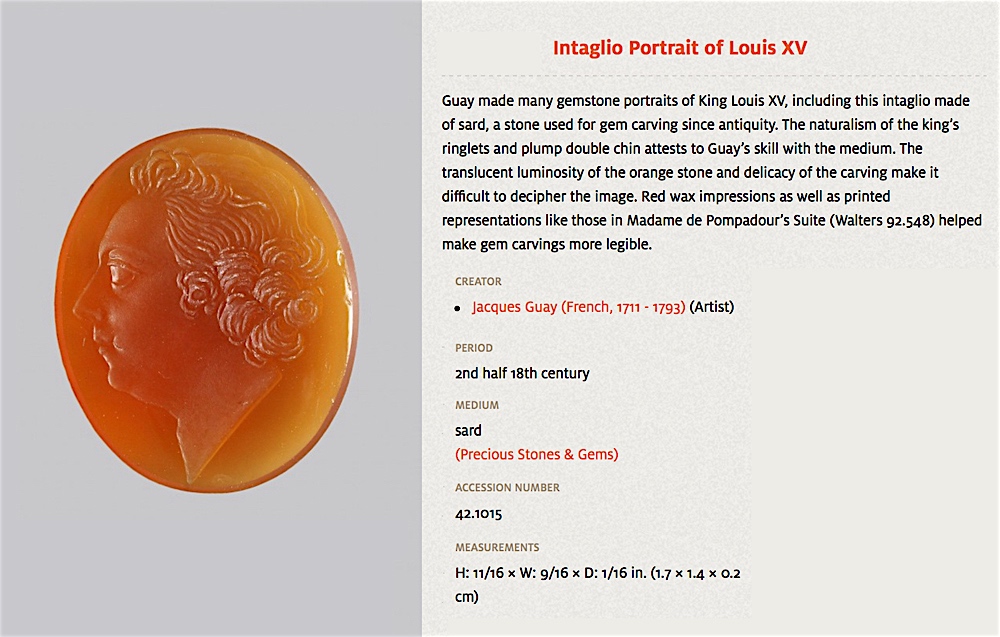
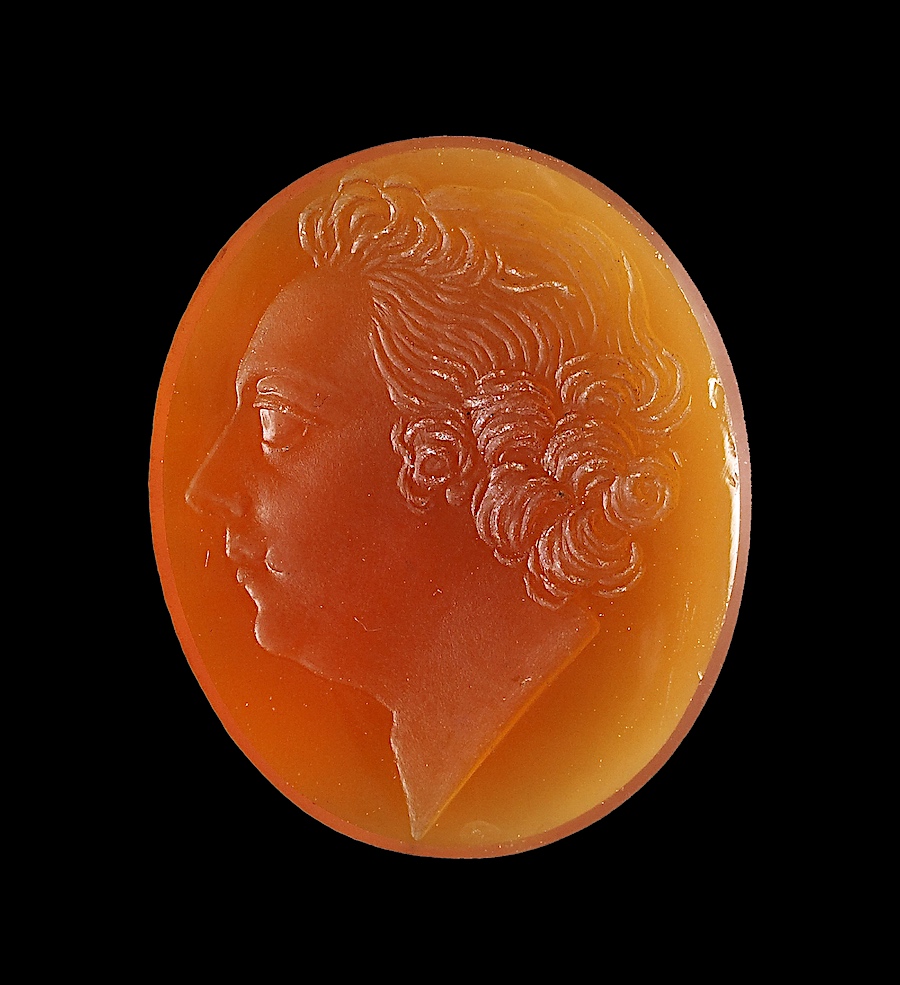
| However the stone in engraving 5 is even smaller than the Walters example being only 12.5 mm by 9.02mm. |
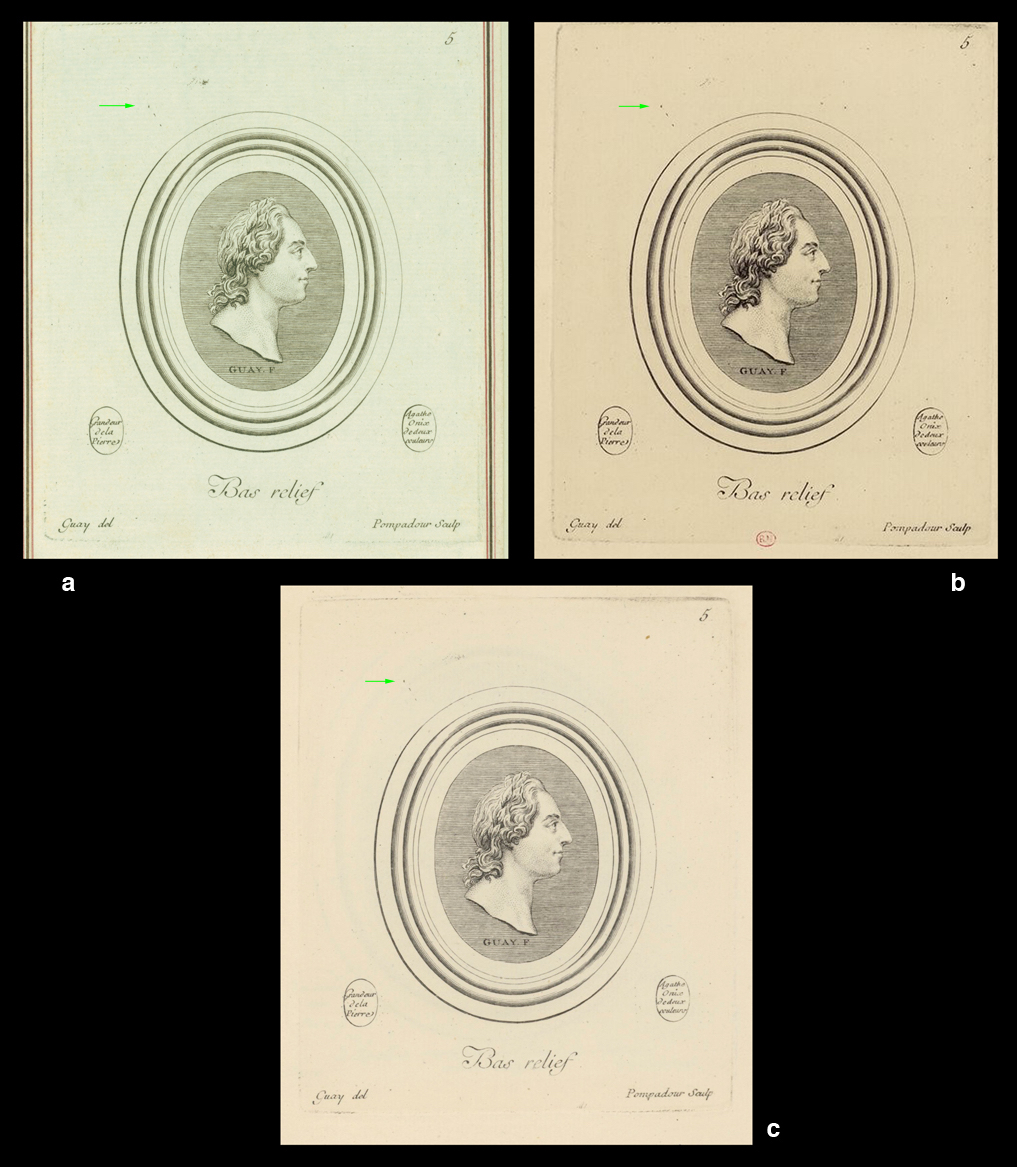
| In Comparative Diagram 4, I show three examples of Pompadour's plate number 5, the first (a) is the Walters Art Museum example (click here to download high resolution copies of all the plates), the second (b) is the BnF Gallica (click here to see all the plates in high resolution), the third (c) is from the Herzogin Anna Amalia Bibliothek (click here to see high resolution images of all of the 1782 edition plates). You will notice a small green arrow, this is indicating a defect of three dots that can be see in all examples of plate 5. |
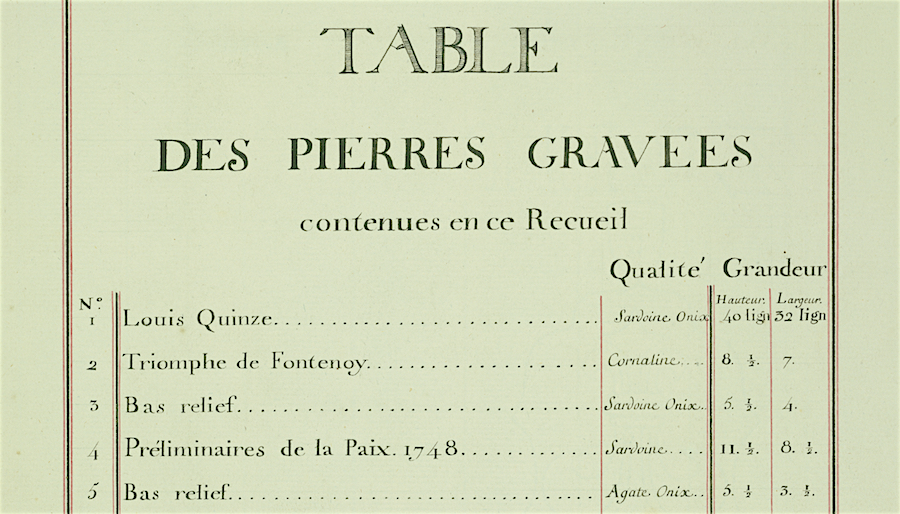
| Below I show PLANCHE D from what is probably the important book ever written concerning the the Pompadour engravings, written by Jean Francois Leturcq in 1826 entitled Notice sur Jacques Guay, graveur sur pierres fines du roi Louis XV. This entire book can be viewed online at Archive.org (click here to see it). I have added two actual photos of these carved jems (cameos). Planche D is a photograph of moulds made from wax impressions taken from part of the collection of cameos held by the Bibliotheque Nationale de France. Within this collection we see a number of items that have been illustrated in Pompadour's engravings and reproduced here also. Below I show some of these that can be found on Gallica, as well as a page from the 1782 edition with descriptive notes for certain of the cameos shown. |
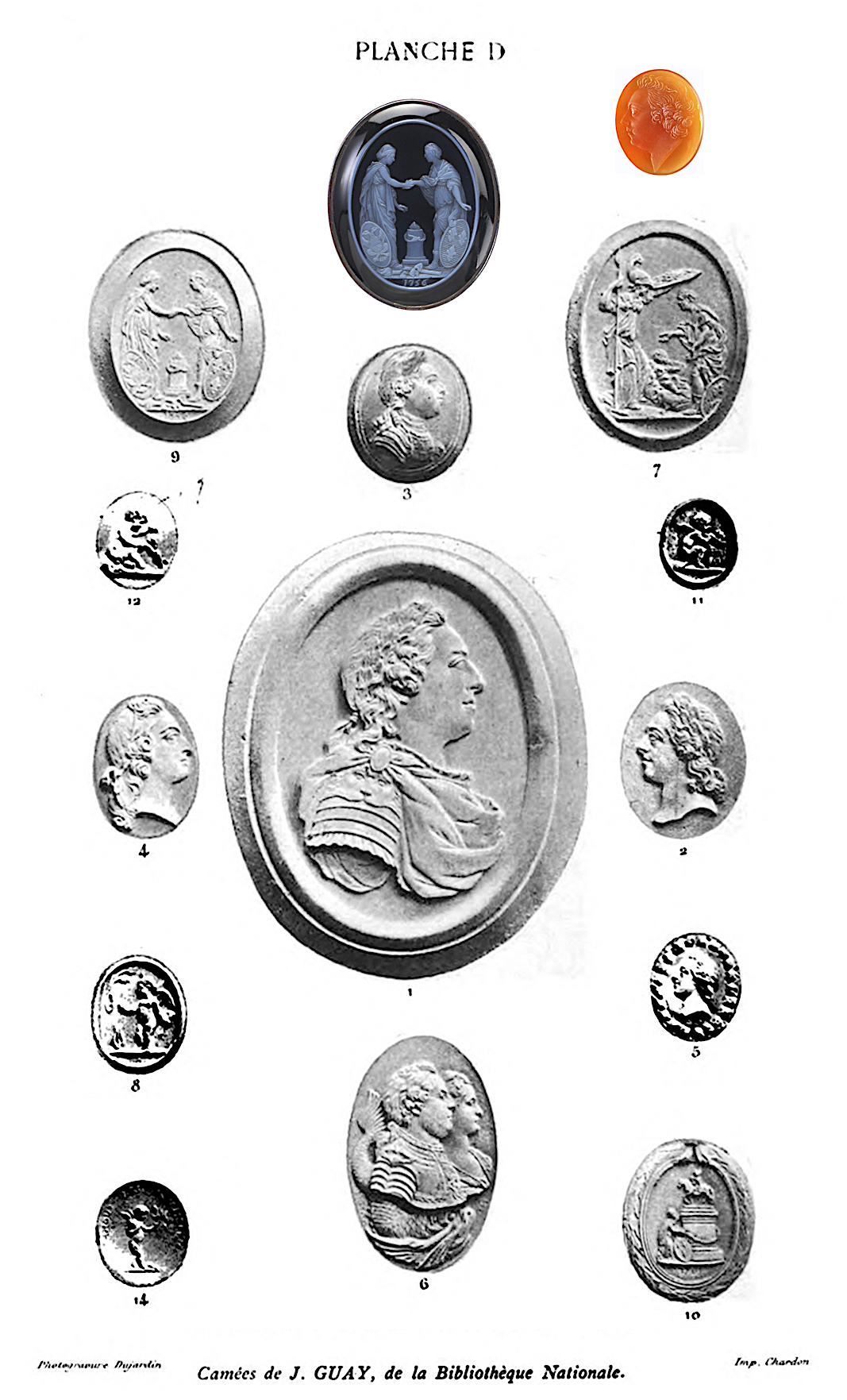
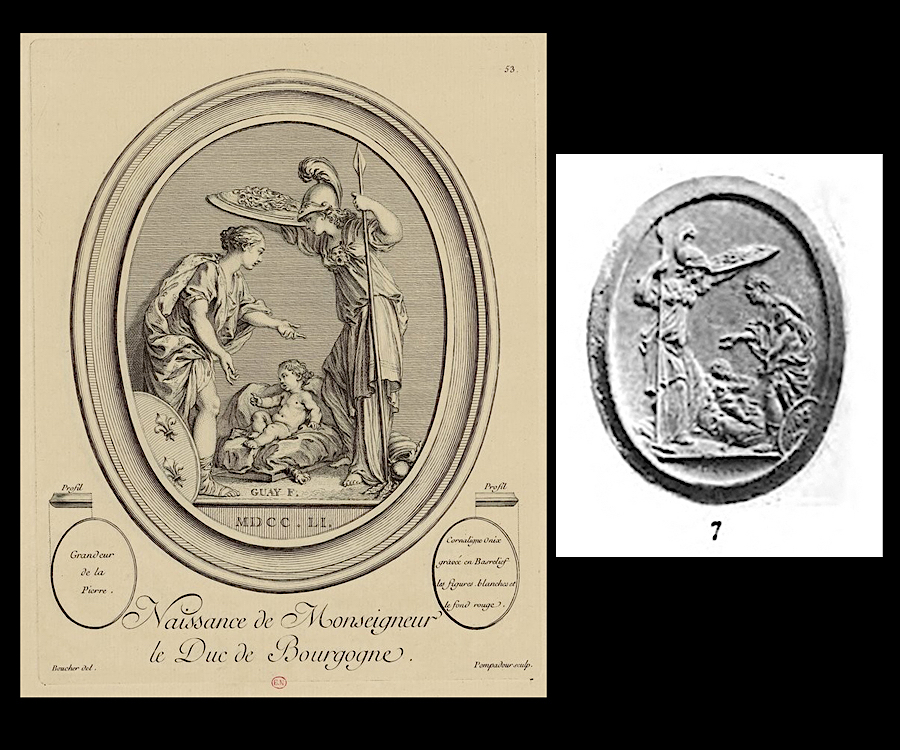
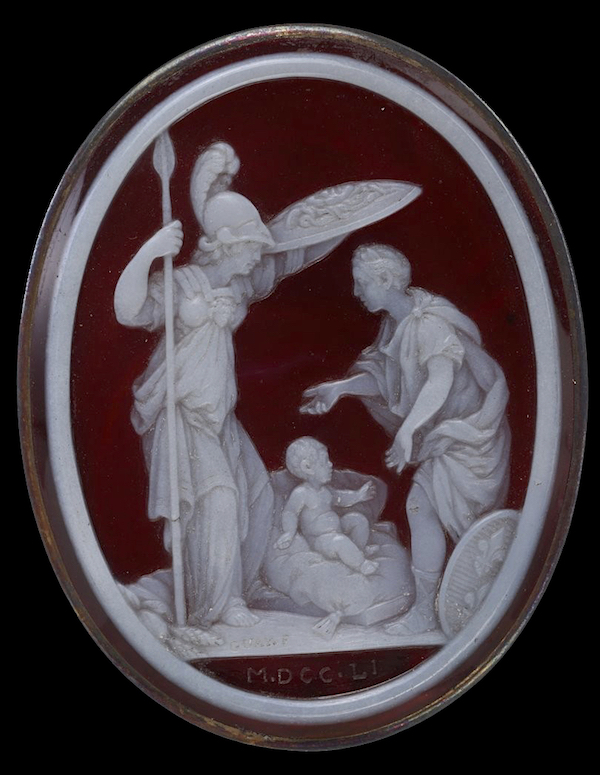
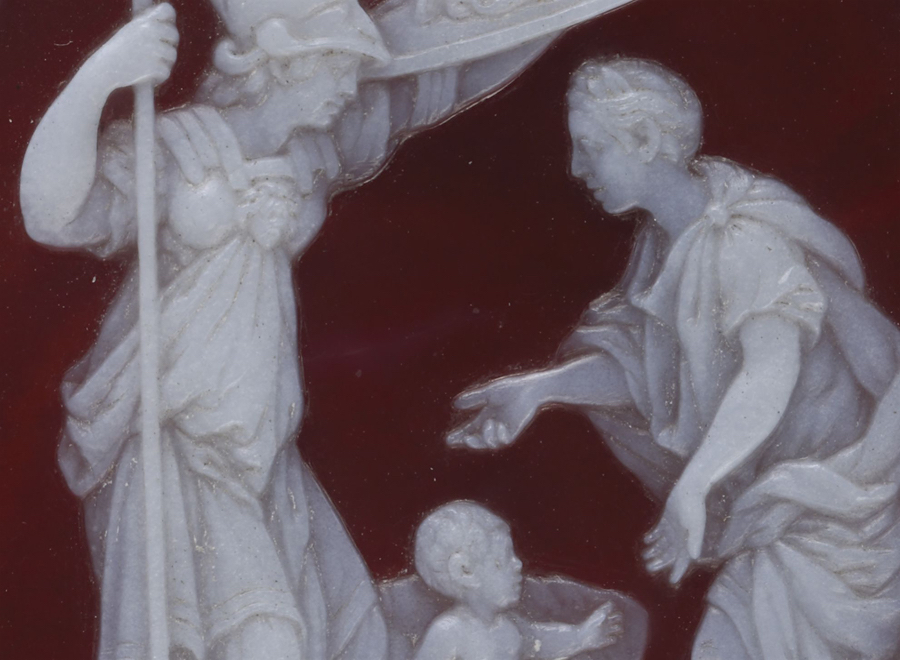
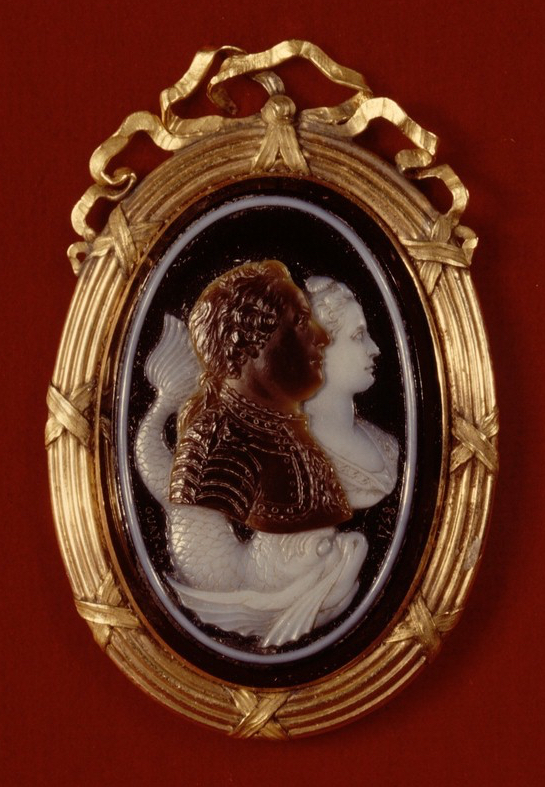
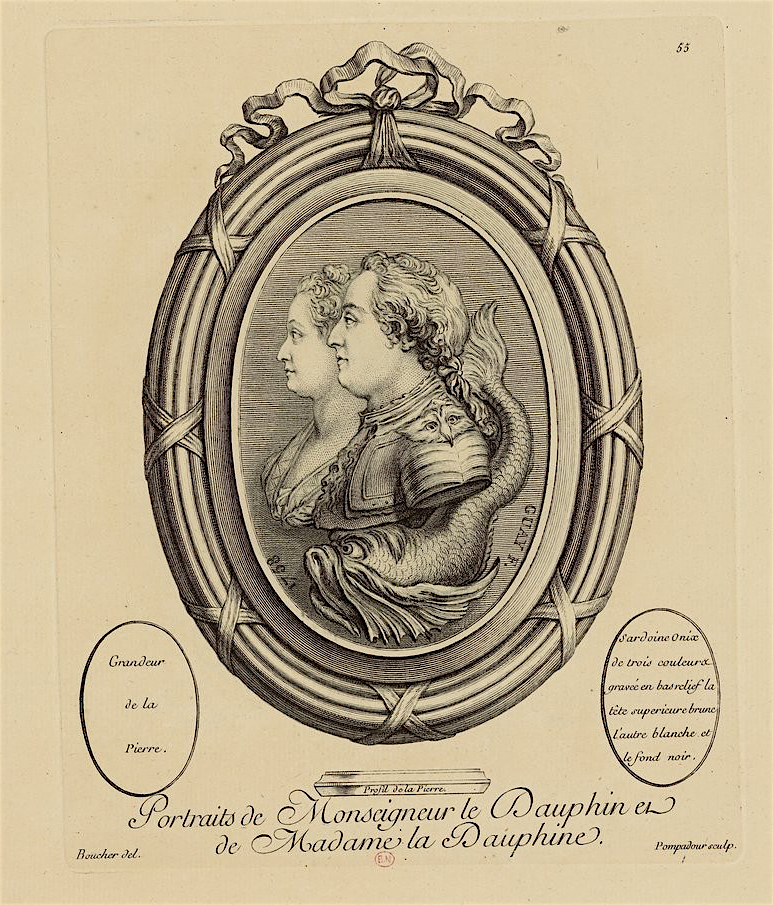
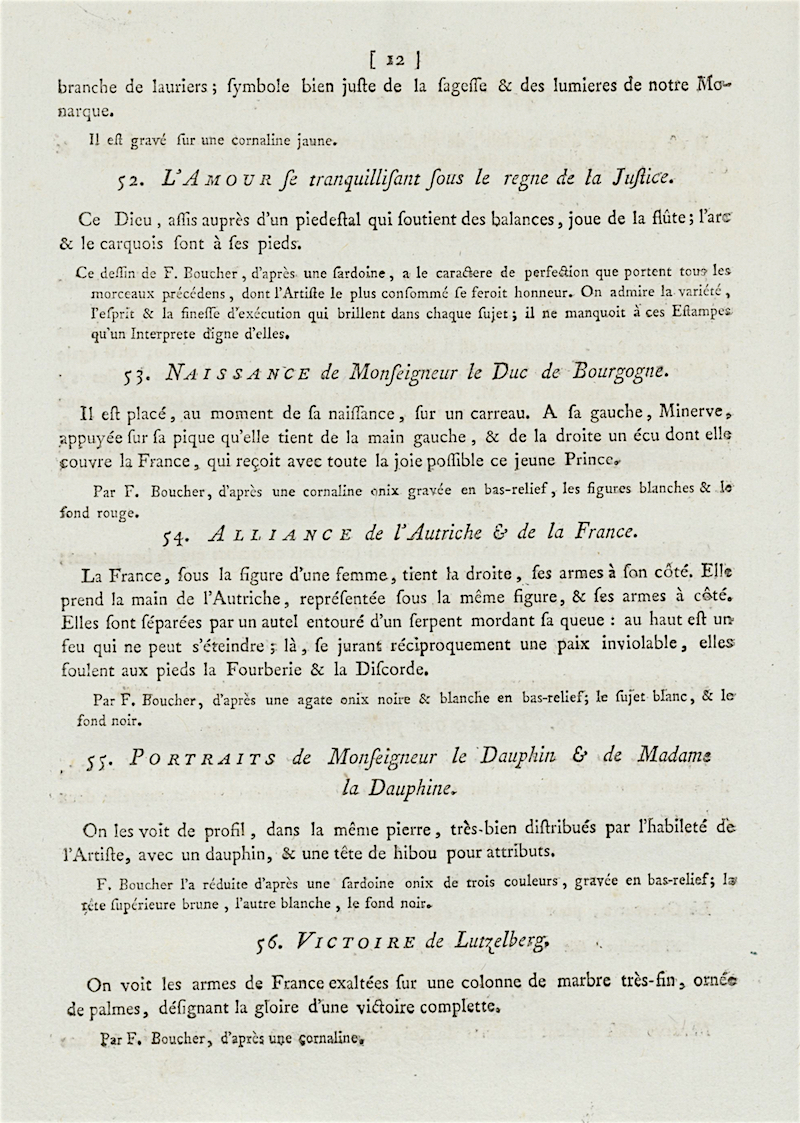
|
click here to return to the HOME page. click here to see the INDEX of the 2017 pages. see below links to previous work |
| Even experts are sometimes wrong, before you spend thousands on a book, please do your own research! Just because I say a certain binding can be attributed to le Maitre isn't any kind of guarantee, don't take my word for it, go a step further and get your own proof. In these pages I have provided you with a way of doing just that. |
| Virtual Bookings, created by L. A. Miller | return to the Home page of VIRTUAL BOOKBINDINGS |